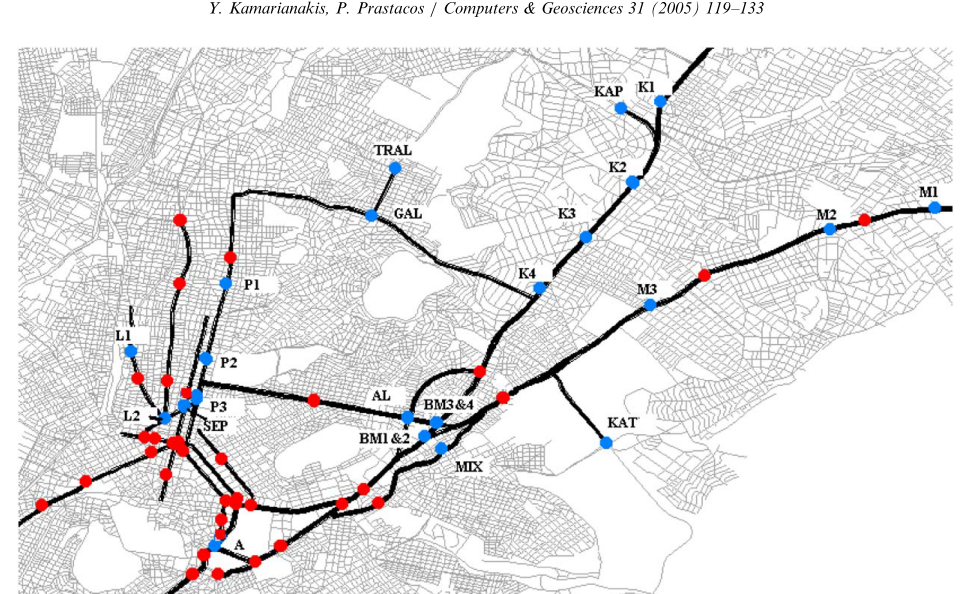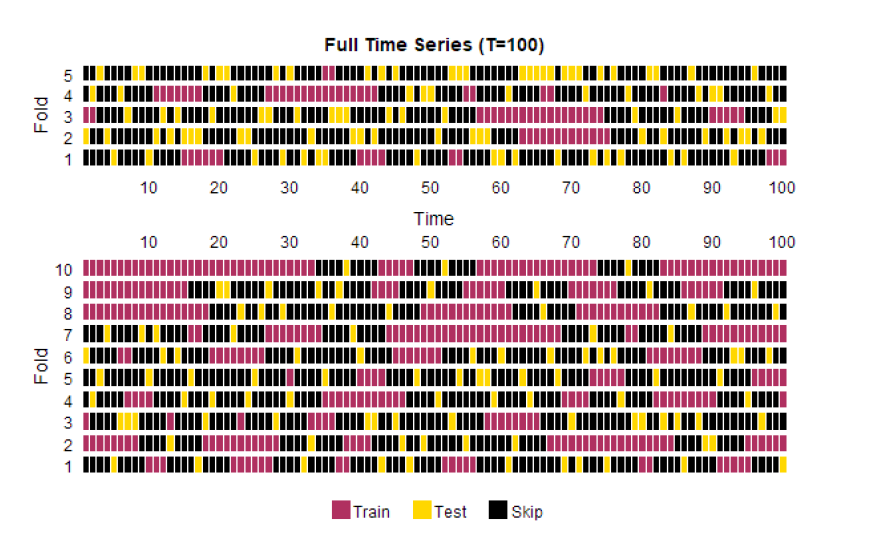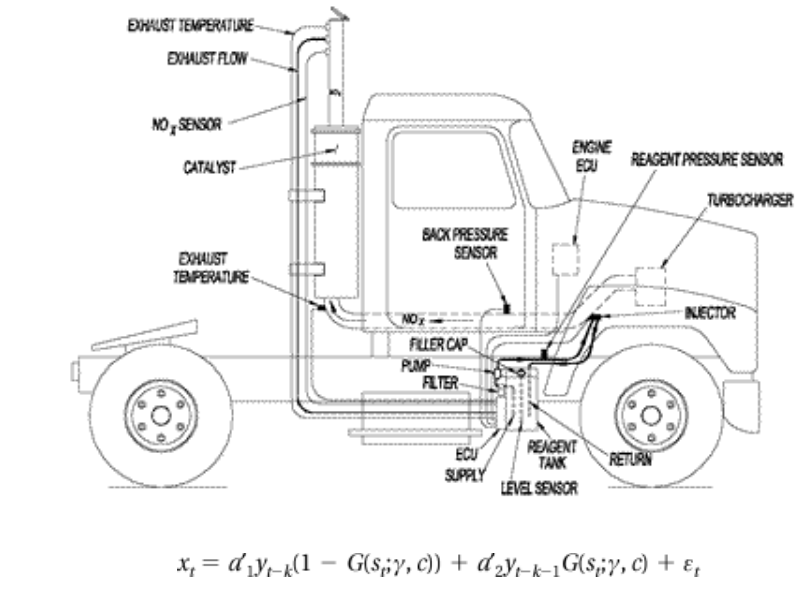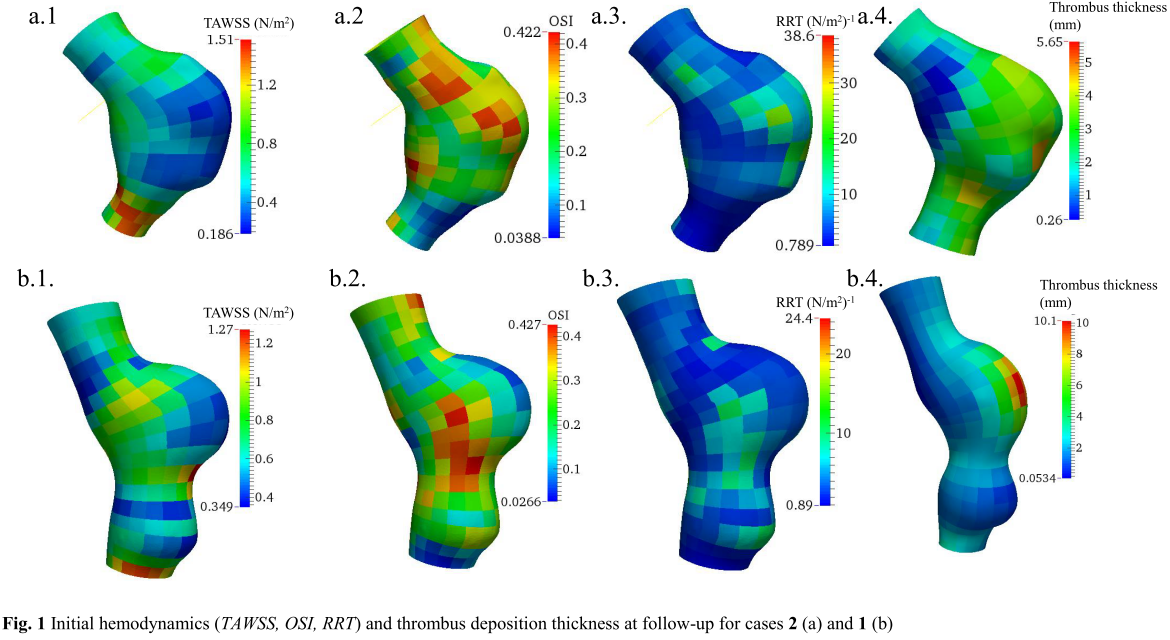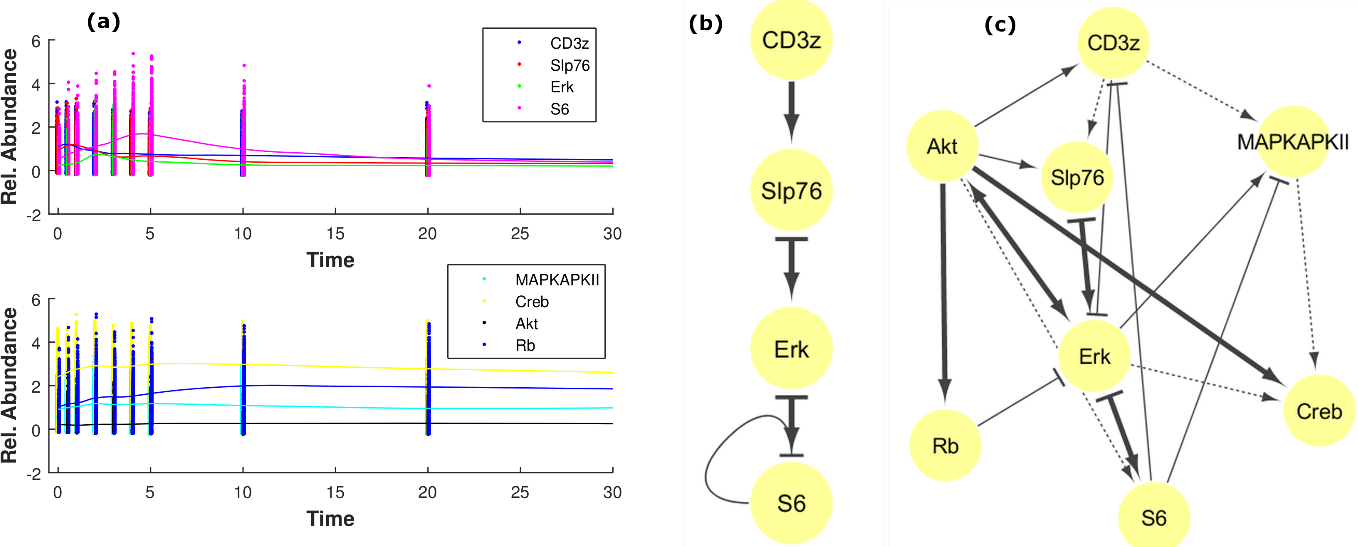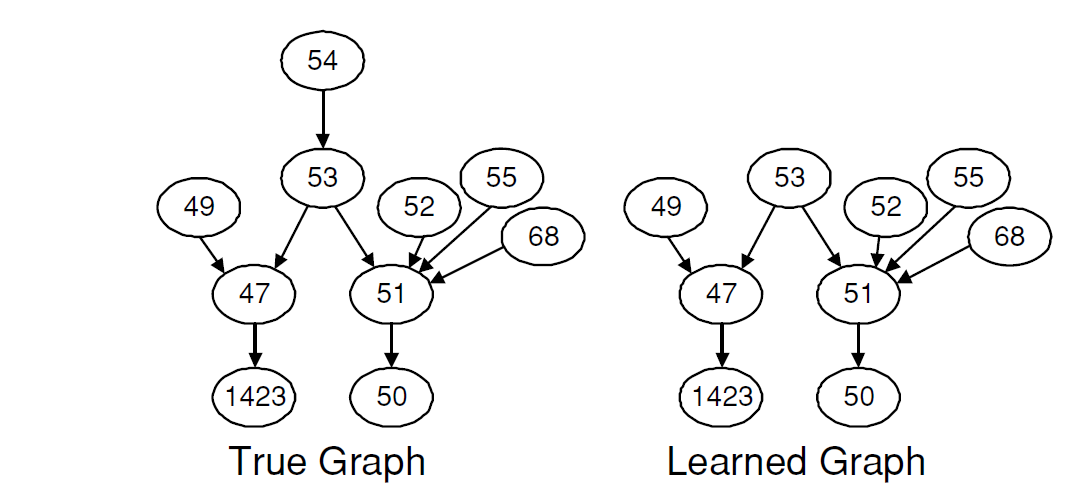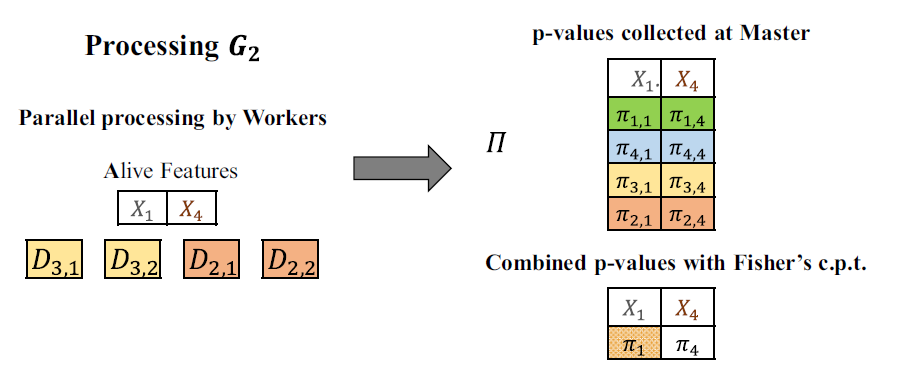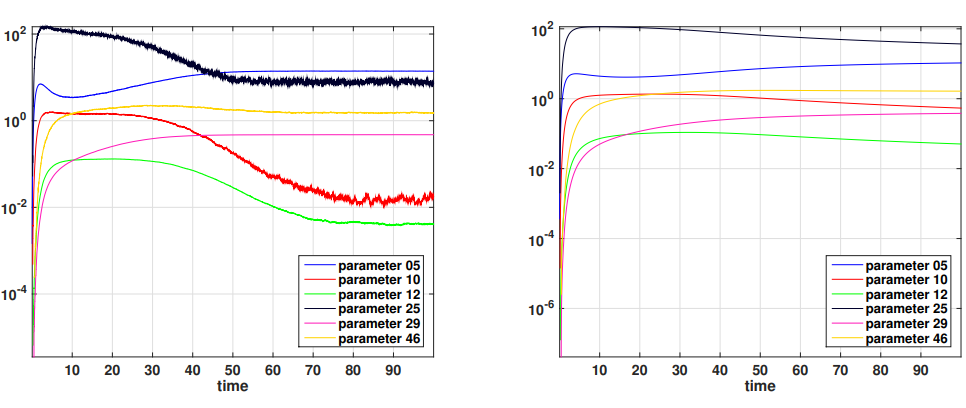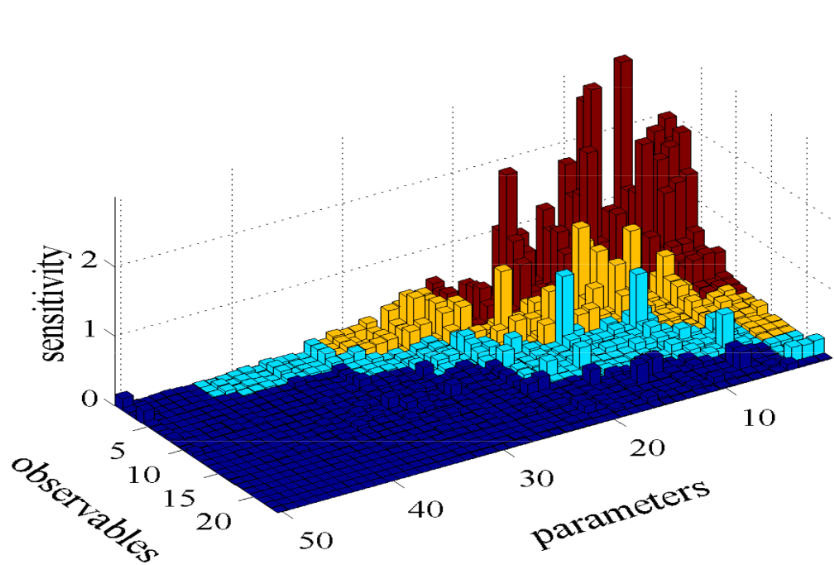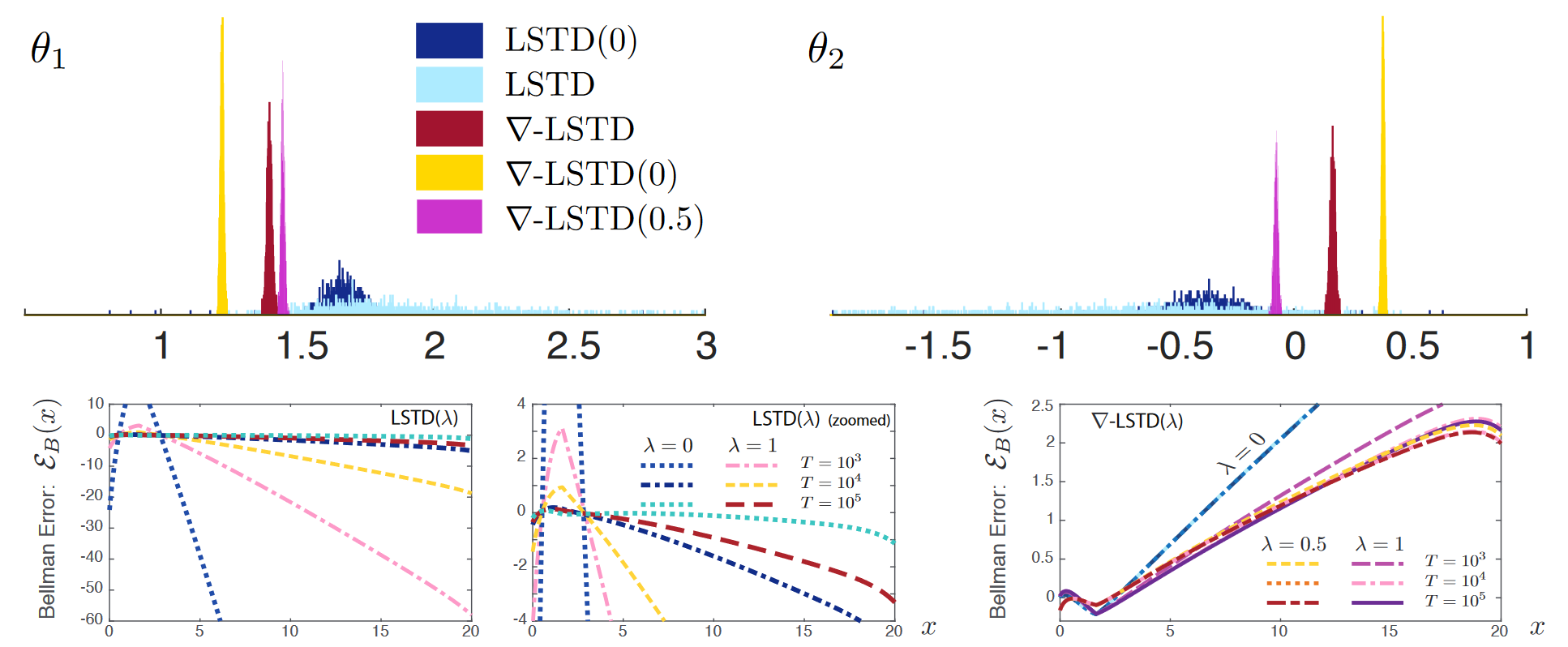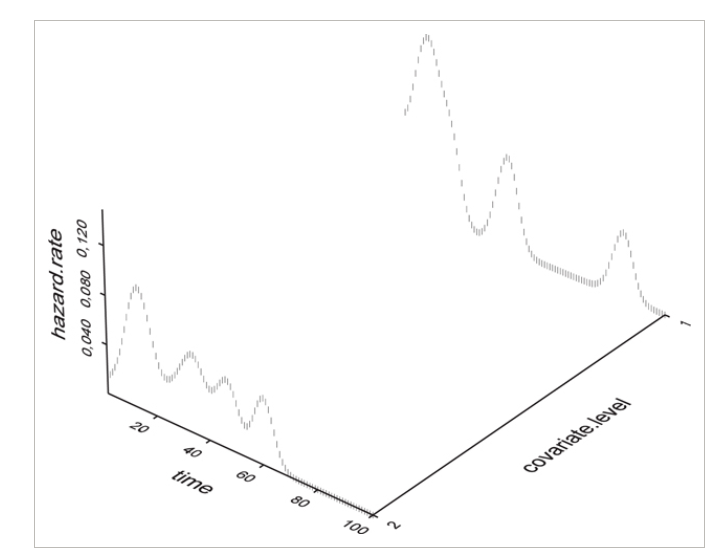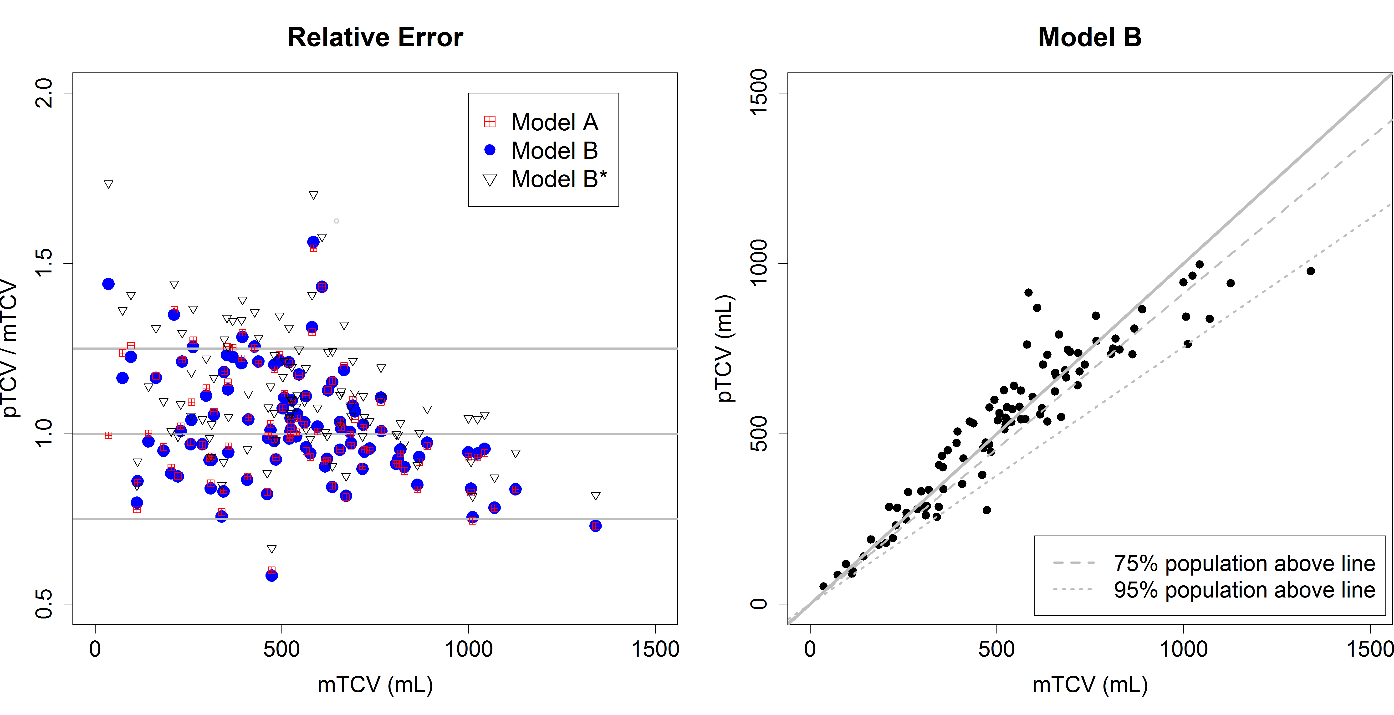 Institute of Applied and Computational Mathematics
IACM is one of the few research institutes in Europe dedicated to promoting the use of advanced mathematics in natural sciences and engineering
Institute of Applied and Computational Mathematics
IACM is one of the few research institutes in Europe dedicated to promoting the use of advanced mathematics in natural sciences and engineering
Data Science
ABOUT
RESEARCH AND DEVELOPMENT ACTIVITIES
-
Deep Learning and Generative AI
Deep learning: Deep learning has recently been at the forefront of artificial intelligence (AI) research and has truly revolutionized several fields of AI. Data Science Group members are actively involved in developing methods that can help us both better understand the limitations of existing deep learning approaches and also improve various aspects of their performance. They have worked on a wide variety of topics from this area, exploring both fundamental questions and practical applications. This includes, to mention a few of these topics, exploring and proposing novel deep network architectures, developing new ways of effectively transferring knowledge between networks, revisiting weight parameterizations for deep networks in order to improve their generalization capabilities, proposing novel self-supervised and few-shot learning methods, devising and applying learning approaches that advance the state-of-the-art for fundamental problems from the areas of computer vision and image analysis, making use of attention in the context of knowledge distillation, proposing hybrid (scattering-based) convolutional network architectures that allow for better representation learning and more interpretable features, as well as properly adapting deep neural networks such that they can be applied to arbitrary graph-structured data directly and can also handle structured-prediction tasks.
Neural-based Speech Synthesis - Deep Learning in Speech Processing: Deep Neural Networks have taken the engineering community by storm. Data-rich areas such as image processing and speech processing have been transformed during the last years. The Data Science Group combines its expertise on speech processing and applies deep learning techniques to applications such as voice conversion, speech synthesis and speech enhancement.
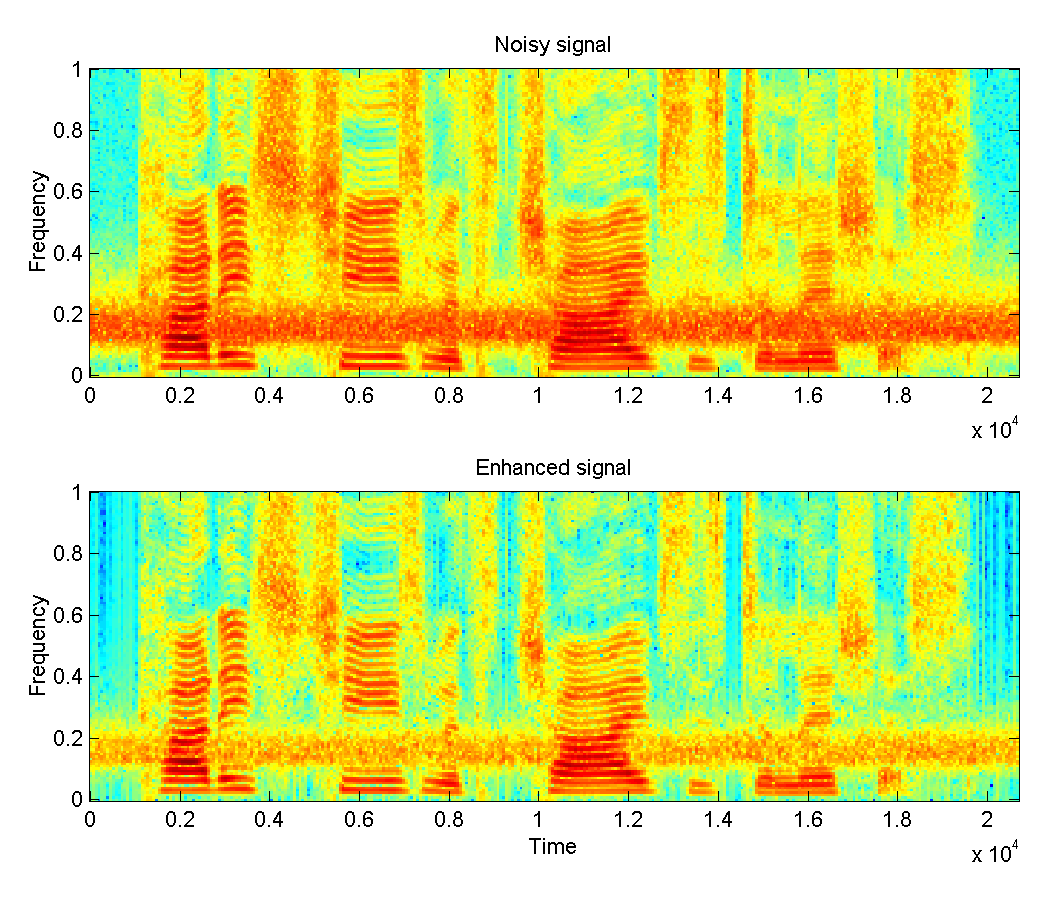
Generative Adversarial Nets - Deep Generative Learning: Generative models based on Deep Neural Nets have shown unprecedented capabilities in sampling data from complex but unknown distributions. Researchers in the Data Science Group develop novel algorithms for training generative models, focusing on Generative Adversarial Networks (GANs). GANs have been used in data augmentation schemes to generate synthetic data that follow the same distributional characteristics as the original dataset (which may contain sensitive information or limited number of cases). The proposed methodology has been applied to identify dyslexia in children, using measurements from specialized eye trackers.
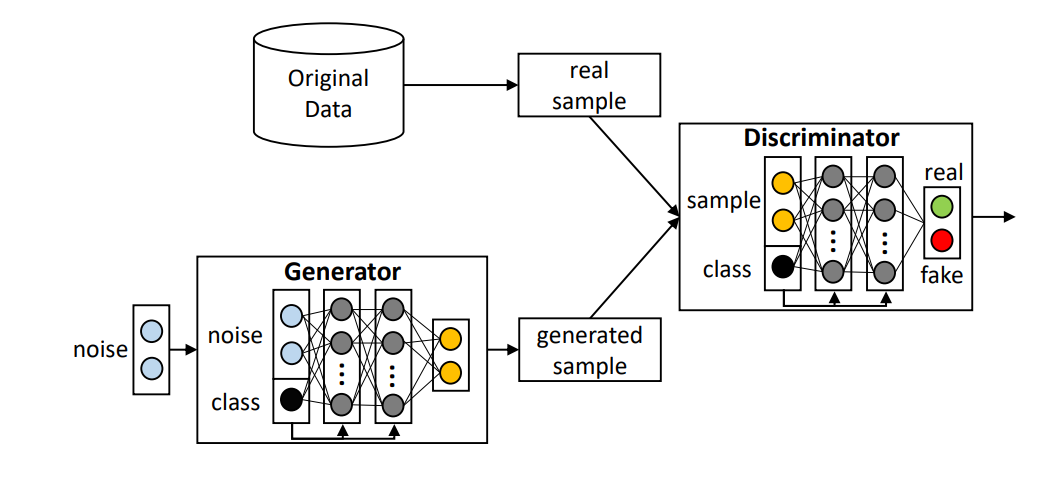
- Spatial, Temporal & Spatio-temporal Statistics
- High-Dimensional and Sparse Statistics
- Uncertainty Quantification
- Additional Topics
- Journal Club on AI
- Education and Training
Data Science
RESEARCH AND DEVELOPMENT PROGRAMS
A. ONGOING PROJECTS
- Title: NEMO-Tools: Next-generation monitoring and mapping tools to assess marine ecosystems and biodiversity
Funding Source: Hellenic Foundation for Research and Innovation
Duration: 2024-2026 - Title: smartHEALTH: European Digital Innovation Hub on Precision Medicine and Innovative E-health Services
Funding Source: EU
Duration: 2024-2026 - Title: Causal discovery and inference for surrogate-assisted optimization
Funding Source and funding scheme: Research and Development Agreement among Huawei Technologies (Ireland) C.O and FORTH
Duration: 10/12/2021-31/08/2025 - Title: Disentangled representation learning via Mutual Information optimization with applications in speech representation learning
Funding Source: Private sector
Duration: 2024-2025 - Title: STOMA: Towards real-time, enhanced text-to-speech synthesis on the device
Funding Source: Hellenic Foundation for Research and Innovation
Duration: 2022-2025
B. COMPLETED PROJECTS
- Title: FUSING: Biophysical tools FUSed via integrative computational approaches to decode protein foldING
Funding Source: FORTH Synergy
Duration: 2022-2024 - Title: SCALINCS: Scaling stochastic dynamics: from microscopic interactions to macroscopic phenomena
Funding Agency and funding scheme: Hellenic Foundation for Research and Innovation (H.F.R.I.) under the “First Call for H.F.R.I. Research Projects to support faculty members and researchers and the procurement of high-cost research equipment”
Duration: 2020-2024 - Title: Data Landscaping: Traffic and Mobility Data Sources of Official Statistics
Funding Source: Eurostat
Duration: 2022 - Title: SOLAR-P: Evaluation of alternative solar panel technologies, computation of irradiance daily profiles
Funding source: Saudi Aramco and KAUST
Duration: 2021-2022 - Title: Characterising population dynamics with applications in biological data
Funding source: ESPA - Department of Development
Duration: 2020-2021 - Title: WNRG: Forecasting hourly wind-farm outputs based on wind-speed predictions from alternative providers
Funding source: EREN-Hellas
Duration: 2020 - Title: ENRICH: Enriched communication across the lifespan
Funding source: EU Horizon 2020, MSCA-ETN-2020
Duration: 2017-2020
PUBLICATIONS
-
2025
- G Aletras, M Bachlitzanaki, M Stratinaki, E Lamprogiannakis, S Panagoutsos, K Kantartzi, T Georgopoulou, I Petrakis, E Foukarakis, Y Pantazis, M Hamilos, K Stylianou (2025) Unraveling Acute Cardiorenal Syndrome: Predictors and Consequences in Acute Heart Failure, Journal of Clinical Medicine 14 (7), 2270, doi: 10.3390/jcm14072270.
- G Aletras, M Bachlitzanaki, M Stratinaki, E Lamprogiannakis, I Petrakis, E Foukarakis, Y Pantazis, M Hamilos, K Stylianou (2025) Integrating Novel Biomarkers into Clinical Practice: A Practical Framework for Diagnosis and Management of Cardiorenal Syndrome, Life 15 (10), 1540, https://doi.org/10.3390/life15101540
- G Aletras, M Bachlitzanaki, M Stratinaki, A Nerantzoulis, T Georgopoulou, E Lamprogiannakis, E Foukarakis, Y Pantazis, M Hamilos, K Stylianou (2025) Beyond a passing decline: acute cardiorenal syndrome as a marker of true renal dysfunction, European Heart Journal, 46 (Supplement_1), ehaf784.1423, https://doi.org/10.1093/eurheartj/ehaf784.1423
- G Aletras, M Bachlitzanaki, M Stratinaki, I Petrakis, T Georgopoulou, Y Pantazis, E Foukarakis, M Hamilos, K Stylianou (2025) The Role of Chloride in Cardiorenal Syndrome: A Practical Review, Journal of Clinical Medicine 14 (15), 5230, https://doi.org/10.3390/jcm14155230
- G Arampatzis, S Katsarakis, C Makridakis (2025) A generative modeling/Physics-Informed Neural Network approach to random differential equations, arXiv preprint arXiv:2507.01687
- A Castellani, Z Papadovasilakis, G Papoutsoglou, M Cole, B Bautsch, T Rodemann, I Tsamardinos, A Harden (2025) Predicting and Explaining Traffic Crash Severity Through Crash Feature Selection, arXiv preprint arXiv:2508.11504
- YC Cheng, H Gu, TO McDonald, W Wu, S Tripathi, C Guarducci, D Russo, DL Abravanel, M Bailey, Y Wang, Y Zhang, Y Pantazis, H Levine, R Jeselsohn, MA Katsoulakis, F Michor (2025) PROFET Predicts Continuous Gene Expression Dynamics from scRNA-seq Data to Elucidate Heterogeneity of Cancer Treatment Responses, bioRxiv, 2025.06. 27.662030, (pdf).
- A Doxa, C Adam, N Nagkoulis, AD Mazaris, S Katsanevakis (2025) prior3D: An R package for three-dimensional conservation prioritization, Ecological Modelling 499, 110919.
- K Ellrott, CK Wong, C Yau, MAA Castro, JA Lee, BJ Karlberg, JK Grewal, V Lagani, B Tercan, V Friedl, T Hinoue, V Uzunangelov, L Westlake, X Loinaz, I Felau, PI Wang, A Kemal, SJ Caesar-Johnson, I Shmulevich, AJ Lazar, I Tsamardinos,... (2025) Classification of non-TCGA cancer samples to TCGA molecular subtypes using compact feature sets, Cancer Cell 43 (2), 195-212. e11 (pdf file).
- P Evangelidakis, Y Kamarianakis (2025) A Comparative Analysis of Robust Penalized Estimators for Periodic Time Series, Greeks in AI Symposium 2025 , https://openreview.net/forum?id=pAfs4ztGG7
- E Georgoulis, MA Zervou, Y Pantazis (2025) Transfer Learning on Protein Language Models Improves Antimicrobial Peptide Classification, Scientific Reports, https://doi.org/10.21203/rs.3.rs-5768912/v1
- A Gerontopoulos, S Gidaris, N Komodakis (2025) Multi-Token Prediction Needs Registers, arXiv preprint arXiv:2505.10518
- S Giakoumi, AJ Richardson, A Doxa, S Moro, M Andrello, JO Hanson, V Hermoso, T Mazor, J McGowan, H Kujala, E Law, JG Álvarez-Romero, RA Magris, E Gissi, N Arafeh-Dalmau, A Metaxas, EA Virtanen, NC Ban, RM Runya, DC Dunn, S Fraschetti, I Galparsoro, RJ Smith, F Bastardie, V Stelzenmüller, HP Possingham, S Katsanevakis (2025) Advances in systematic conservation planning to meet global biodiversity goals, Trends in Ecology & Evolution 40 (4), 395-410.
- N Gkorgkolis, N Kougioulis, MX Wang, B Caglayan, A Tonon, D Simionato, I Tsamardinos (2025) Temporal Causal-based Simulation for Realistic Time-series Generation, arXiv preprint arXiv:2506.02084
- G Grekas, CG Makridakis, T Pryer (2025) PINN-DG: Residual neural network methods trained with Finite Elements, arXiv preprint arXiv:2507.03521
- G Grekas, CG Makridakis (2025) Deep Ritz - Finite element methods: Neural network methods trained with finite elements, Computer Methods in Applied Mechanics and Engineering, Vol. 437, 117798, https://doi.org/10.1016/j.cma.2025.117798
- J Grewal, A Robertson, K Ellrott, C Wong, J Lee, C Yau, B Tercan, M Castro, C Benz, T Knijnenburg, V Chagas, V Apolonio, V Friedl, J Stuart, V Uzunangelov, J Andersen, A Cherniack, G Gao, G Getz, S Hoyt, W Roh, L Westlake, S Jones, S Caesar-Johnson, JDemchok, I Felau, A Kemal, R Tarnuzzer, Z Wang, L Yang, J Zenklusen, R Akbani, B M Broom, Z Ju, A Schultz, A Ojesina, K Hoadley, A Lal, D Ramazzotti, C Wang, A Lazar, L Roberts, TK Kim, I Shmulevich, P Charonyktakis, V Lagani, I Tsamardinos, ... (2025) Protocol for obtaining cancer type and subtype predictions using subSCOPE, STAR protocols 6 (2), 103705, https://doi.org/10.1016/j.xpro.2025.103705
- E Karypidis, I Kakogeorgiou, S Gidaris, N Komodakis (2025) Advancing Semantic Future Prediction through Multimodal Visual Sequence Transformers, Proceedings of the Computer Vision and Pattern Recognition Conference, 3793-3803.
- T. Kassiotis and Y. Pantazis (2025) Disentangling Speech Representations with Mutual Information Estimators for Expressive Synthesis, 33rd European Signal Processing Conference (EUSIPCO 2025), Palermo, Italy, September 8-12, 2025, https://eusipco2025.org/wp-content/uploads/pdfs/0000451.pdf
- K Konsta, A Doxa, S Katsanevakis, AD Mazaris (2025) Projected marine heatwaves over the Mediterranean Sea and the network of marine protected areas: a three-dimensional assessment, Climatic Change 178 (2), 1-20.
- K Kostas, S Kar, K Mavridis, E Deligianni, E Roditakis, E Gizeli, J Vontas, Y. Kamarianakis, P. Karanis, M. Kotsyfakis (2025) Tick-borne challenges in a changing climate: risks and mitigation strategies for Mediterranean livestock systems, Entomologia Generalis, DOI:10.1127/entomologia/3648
- T Kouzelis, I Kakogeorgiou, S Gidaris, N Komodakis (2025) EQ-VAE: Equivariance Regularized Latent Space for Improved Generative Image Modeling, arXiv preprint arXiv:2502.09509
- T Kouzelis, E Karypidis, I Kakogeorgiou, S Gidaris, N Komodakis (2025) Boosting Generative Image Modeling via Joint Image-Feature Synthesis, arXiv preprint arXiv:2504.16064
- S LaPlante, E Perković, S Triantafillou (2025) Data-Driven Adjustment for Multiple Treatments, arXiv preprint arXiv:2503.08971
- OP Leary, H Hwang, MD Pizzagalli, V Voong, L Tran, M Duffy, J Arditi, A Choi, J Zepecki, G Papoutsoglou, I Tsamardinos, PL Zadnik Sullivan, PM Klinge, N Tapinos (2025) BIOM-67. A MIRNA-BASED LIQUID BIOPSY FOR BRAIN TUMOR DIAGNOSIS AND IN VITRO EFFECTS OF MIRNA INHIBITION ON GLIOBLASTOMA STEM CELL GROWTH, VIABILITY, AND SELF-RENEWAL, Neuro-Oncology 27 (Supplement_5), v39-v39.
- K Lelova, GF Cooper, S Triantafillou (2025) Testing Identifiability and Transportability with Observational and Experimental Data, arXiv preprint arXiv:2505.12801
- C.G. Makridakis, A. Pim, T. Pryer (2025) A Deep Uzawa-Lagrange Multiplier Approach for Boundary Conditions in PINNs and Deep Ritz Methods, Journal of Machine Learning, Vol. 4 (3), 166–191, (html file)
- C. Makridakis, A. Pim, T. Pryer, N. Rekatsinas (2025) Deep Uzawa for Kinetic Transport with Lagrange-Enforced Boundaries, arXiv preprint arXiv:2507.19907
- N Myrtakis, I Tsamardinos, V Christophides (2025) A Comparative Analysis of Influence Signals for Data Debugging, arXiv preprint arXiv:2506.11584
- N Myrtakis, I Tsamardinos, V Christophides (2025) Data Glitches Discovery using Influence-based Model Explanations, Proceedings of the 31st ACM SIGKDD Conference on Knowledge Discovery and and Data Mining V.1, pp. 1068-1079. https://doi.org/10.1145/3690624.3709285
- N Myrtakis, I Tsamardinos, V Christophides (2025) Data Glitches Discovery using Influence-based Model Explanations, Greeks in AI Symposium 2025 (pdf).
- M Panagopoulou, M Papadaki, M Karaglani, T Theodosiou, K Michaelidou, S Baritaki, I Tsamardinos, S Kakolyris, S Agelaki, E Chatzaki (2025), Νovel methylation biomarkers in liquid biopsy and classifying biosignatures for the clinical management of Breast Cancer, https://doi.org/10.21203/rs.3.rs-6697291/v1
- C Papadaki, M Mortoglou, AE Boukouris, K Gourlia, M Markaki, E Lagoudaki, A Koutsopoulos, I Tsamardinos, D Mavroudis, S Agelaki (2025) MicroRNA Expression Analysis and Biological Pathways in Chemoresistant Non-Small Cell Lung Cancer, Cancers 17 (15), 2504.
- A Papapantoleon, A Saplaouras, S Theodorakopoulos (2025) Stability of backward propagation of chaos, arXiv preprint arXiv:2506.03562
- G Paterakis, A Castellani, G Papoutsoglou, T Rodemann, I Tsamardinos (2025) A Comprehensive Perspective on Explainable AI across the Machine Learning Workflow, arXiv preprint arXiv:2508.11529
- B Psomas, D Christopoulos, E Baltzi, I Kakogeorgiou, T Aravanis, N Komodakis, K Karantzalos, Y Avrithis, G Tolias (2025) Attention, Please! Revisiting Attentive Probing for Masked Image Modeling, arXiv preprint arXiv:2506.10178
- C Sarafoglou, A Kofidis, M de Boer, M Mylonakis, K Mavrakis, G Zacharakis, Y Pantazis, G Gouridis (2025) NEXT-FRET: A solution-based smFRET platform to resolve folding intermediates under native conditions, bioRxiv, 2025.07. 30.666321, (pdf).
- FA Shah, VB Talisa, CCH Chang, S Triantafyllou, L Tang, FB Mayr, ... (2025) Heterogeneity in the effect of early goal-directed therapy for septic shock: A secondary analysis of two multicenter international trials, Critical Care Medicine 53 (1), e4-e14.
- D Shopkhoev, A Ali, M Zhussip, V Malykh, S Lefkimmiatis, N Komodakis, S Zagoruyko (2025) ReplaceMe: Network Simplification via Layer Pruning and Linear Transformations, arXiv preprint arXiv:2505.02819
- O Simantiraki, M Markaki, Y Pantazis (2025) Dynamic Speech Generation to Enhance Intelligibility in Noisy Environments, ICASSP 2025-2025 IEEE International Conference on Acoustics, Speech and Signal Processing (ICASSP), Hyderabad, India, 2025, pp. 1-5, doi: 10.1109/ICASSP49660.2025.10887886
- E. Sisamaki, Y. Pantazis, V. Tsiaras, Y. Stylianou (2025) Distillation-free, stable Training of ClariNet Vocoder with Spectral Energy Distance. 33rd European Signal Processing Conference (EUSIPCO 2025), Palermo, Italy, September 8-12, 2025, https://eusipco2025.org/wp-content/uploads/pdfs/0000541.pdf
- Q Spinat, B Audelan, X Jiang, B Caba, A Benichoux, D Ioannidou, O Teboul, N Komodakis, W Huijbers, R Gabr, A Gafson, C Eliott, D Arnold, N Paragios, S Belachew (2025) Deep learning detection of acute and sub-acute lesion activity from single-timepoint conventional brain MRI in multiple sclerosis, Medical Image Analysis 105, 103619, https://doi.org/10.1016/j.media.2025.103619
- Spinat, Q., Duran, A., Teboul, O., Paragios, N., Komodakis, N. (2026). Diffusing Boundaries: CBCT-to-CT Translation with Extended Field of View. In: Gee, J.C., et al. Medical Image Computing and Computer Assisted Intervention – MICCAI 2025. Lecture Notes in Computer Science, vol 15972. Springer, Cham. https://doi.org/10.1007/978-3-032-05169-1_15
- B Tercan, V Apolonio, V Chagas, C Wong, J Lee, C Yau, C Benz, J Stuart, B Karlberg, K Ellrott, J Grewal, S Jones, T Knijnenberg, M Castro, V Friedl, V Uzunangelov, R Beroukhim, A Cherniack, G Gao, G Getz, S Hoyt, X Loinaz, W Roh, C Stewart, L Westlake, AG Robertson, S Caesar-Johnson, J Demchok, I Felau, A Kemal, R Tarnuzzer, P Wang, Z Wang, L Yang, J Zenklusen, R Akbani, B Broom, Z Ju, A Schultz, A Ojesina, K Hoadley, A Lal, D Ramazzotti, C Wang, A Lazar, L Roberts, TK Kim, I Shmulevich, P Charonyktakis, V Lagani, I Tsamardinos, ... (2025) Protocol for assessing distances in pathway space for classifier feature sets from machine learning methods, STAR protocols 6 (2), 103681.
- G Tsaknakis, AM Perantonaki, S Papadakis, A Komodromou, I Mavroudi, C Pontikoglou, Z Papadovasilakis, G Papoutsoglou, I Tsamardinos, H Papadaki (2025) Novel diagnostic and prognostic tools for patients with chronic idiopathic neutropenia: Data on a cohort of 266 patients, Blood 146, 623, https://doi.org/10.1182/blood-2025-623
- M. A. Zervou, E. Doutsi, Y. Pantazis, P. Tsakalides (2025) De Novo Antimicrobial Peptide Design with Feedback Generative Adversarial Networks, Int. J. Mol. Sci. 2024, 25, 5506. https://doi.org/10.3390/ijms25105506
- 2024
- 2023
- 2022
- 2021
- 2020
- 2019
PEOPLE
- Biza Konstantina (PhD candidate)
- Georgoulis Elias (MSc candidate)
- Kofidis Andreas (MSc candidate)
- Litsas Anastasios (MSc candidate)
- Papadaki Maria-Eleni (MSc candidate)
- Raptakis Michail (PhD candidate)
CONTACT US
Data Science Group,
Institute of Applied and Computational Mathematics,
Foundation for Research and Technology - Hellas
Nikolaou Plastira 100, Vassilika Vouton,
GR 700 13 Heraklion, Crete
GREECE
Tel: +30 2810 391800
E-mail: This email address is being protected from spambots. You need JavaScript enabled to view it. (Mrs. Maria Papadaki)
Tel.: +30 2810 391805
E-mail: This email address is being protected from spambots. You need JavaScript enabled to view it. (Mrs. Yiota Rigopoulou)
